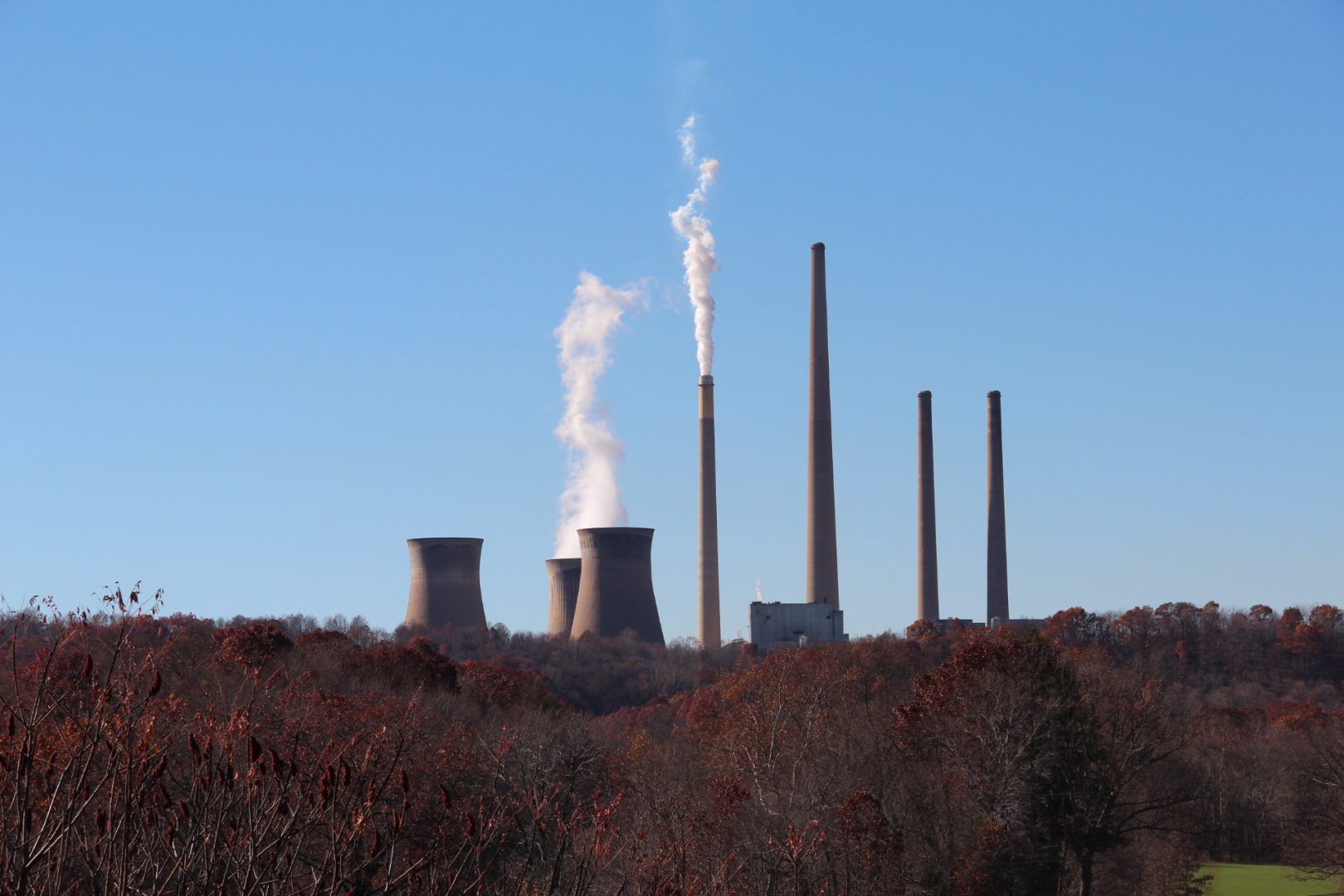
The coal-fired Homer City Generating Station. Photo: Reid R. Frazier
Reid R. Frazier / StateImpact Pennsylvania


The coal-fired Homer City Generating Station. Photo: Reid R. Frazier
Reid R. Frazier / StateImpact Pennsylvania

Reid R. Frazier / StateImpact Pennsylvania
The coal-fired Homer City Generating Station. Photo: Reid R. Frazier
Opened in 1969 as a base load power plant designed to provide electricity to large areas of Pennsylvania and New York, the Homer City Generating Station in Indiana County is shutting its doors. Part of a nationwide trend, Homer City could not compete with cheaper Marcellus Shale gas and more efficient combined-cycle power plants.
Coal fired power generates about 196 gigawatts of energy today, down from 313 GW in 2005, according to the federal Energy Information Administration. Although coal at one point provided the majority of power in the U.S., it now generates about 20%. Natural gas generation today produces 40% of the country’s energy. For the first time, wind and solar energy generated more power in the U.S. in the first half of this year than coal.
Homer City has a capacity to generate 1,888 megawatts of electricity. While it operated at nearly full capacity for three decades, recently it has only been producing at 20% of its capacity.
Along with electricity, the plant was also a major air polluter, emitting mercury, nitrous oxides, and climate warming carbon dioxide. At one point it was the country’s largest emitter of sulfur dioxide, according to Tom Schuster, director of the Sierra Club’s Pennsylvania chapter.
In 2001, and then later in 2014, the plant installed pollution controls including scrubbers to reduce mercury, sulfur dioxide and other toxic emissions. The latter cost a reported $750 million.
“It kind of demonstrated the idea that you have to make a choice between cheap coal and clean coal,” Schuster said. “Coal can’t be both cheap and clean at the same time. It does generate a lot of pollution. And controlling that pollution can be expensive.”
In May, the Environmental Protection Agency proposed new rules that would limit even more emissions from coal and natural gas power plants.
“At the end of the day, it’s really imperative that we move past coal from a climate perspective,” Schuster said. “And it’s not just incompatible with net zero emissions [goals]. But it’s also really inevitable from an economic perspective because coal plants like Homer City that are over 50 years old are obsolete technology and just not as efficient as other, cleaner ways of generating electricity at this point.”
Homer City Generation’s CEO, William A. Wexler, said in a statement in April that Homer City would close “by July 1,” but efforts to reach the company for the exact date were unsuccessful.
The decision, Wexler said, was based on factors including “the low price of natural gas, a dramatic spike in the cost of its ongoing coal supply, unseasonably warm winters and increasingly stringent environmental regulations.”
The switch to natural gas from coal has some predicting a similar shift in the coming decades when new natural gas plants begin to age.
Joe Minott, executive director of The Clean Air Council, says while natural gas is replacing the state’s coal powered plants, the future is in renewables like wind, solar and geothermal energy.
“The same thing is going to happen to gas over the next 10 to 15 years,” said Minott. “What’s frustrating to me is the lack of foresight by our elected leaders to see where the future is going. And they’re hanging on for dear life to a technology that is just no longer as relevant in this century, certainly towards the end of the century.”
But the effort involved in mothballing our current energy infrastructure and building a new system to encompass those renewable sources is “seismic,” according to Emily Grubert, an associate professor at Notre Dame who is both a civil engineer and environmental sociologist.
“The pathway has to include a lot more government intervention,” she said. “We need to start with programs that focus on people.”
StateImpact Pennsylvania is a collaboration among WITF, WHYY, and the Allegheny Front. Reporters Reid Frazier, Rachel McDevitt and Susan Phillips cover the commonwealth’s energy economy. Read their reports on this site, and hear them on public radio stations across Pennsylvania.
(listed by story count)
StateImpact Pennsylvania is a collaboration among WITF, WHYY, and the Allegheny Front. Reporters Reid Frazier, Rachel McDevitt and Susan Phillips cover the commonwealth’s energy economy. Read their reports on this site, and hear them on public radio stations across Pennsylvania.
Climate Solutions, a collaboration of news organizations, educational institutions and a theater company, uses engagement, education and storytelling to help central Pennsylvanians toward climate change literacy, resilience and adaptation. Our work will amplify how people are finding solutions to the challenges presented by a warming world.